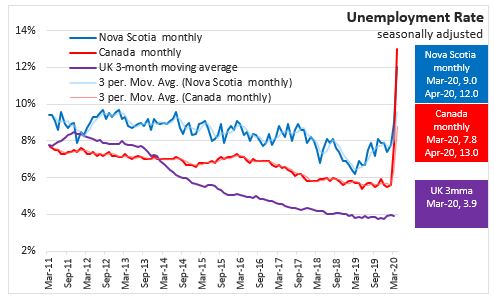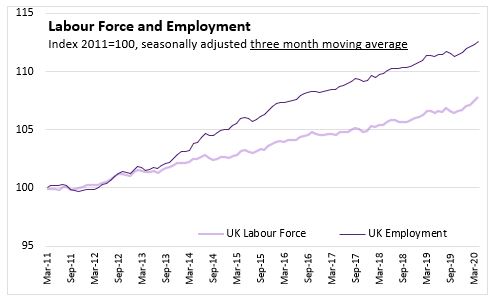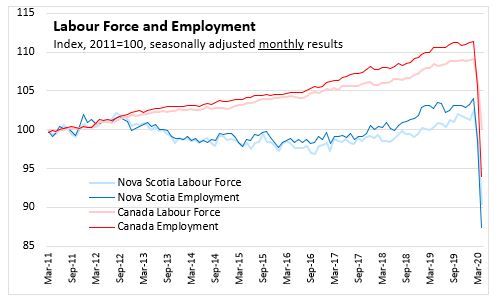The Economics and Statistics Division maintains archives of previous publications for accountability purposes, but makes no updates to keep these documents current with the latest data revisions from Statistics Canada. As a result, information in older documents may not be accurate. Please exercise caution when referring to older documents. For the latest information and historical data, please contact the individual listed to the right.
<--- Return to Archive
For additional information relating to this article, please contact:
May 19, 2020UK LABOUR FORCE SURVEY, JANUARY 2020 TO MARCH 2020 
The UK Office for National Statistics (ONS) reported today that the unemployment rate for the three-month period January 2020 to March 2020 averaged 3.9 per cent, down slightly from previous estimates. Over the last seven years, there has been a steady decline in the UK unemployment rate, falling to lows not seen since 1974.
The UK employment rate among those aged 16-64 averaged 76.6 per cent from January to March, the highest rate on record. The UK employment rate has been at all time highs for the last 8 months.
Data from January - March 2020 are the period during which the COVID-19 pandemic has relatively little effect on the UK labour market. The ONS and HM Revenue and Customs (HMRC) jointly published an experimental monthly flash estimate of paid employees and their pay as you earn real time information. In April 2020 the number of paid employees fell by 1.2 per cent compared with April 2019 and fell by 1.6 per cent when compared with March 2020. The median monthly pay grew by 2.7 per cent in March 2020 and fell by 0.9 per cent in April 2020 compared with the same period of the previous year.
The Vacancy Survey for the period February to April 2020 show that the number of vacancies decreased by 21.0 per cent compared with the previous quarter, showing a slump in the demand for labour. The decrease of 170,000 vacancies is the largest quarterly fall in the history of the time series. The Institute for Employment Studies' (IES) analysis of the vacancy data shows that the overall vacancy level decreased by 59 per cent between the second week of March and the week ending 3 May 2020.
The ONS Business Impact of Coronavirus (COVID-19) Survey (BICS) for the period 6 April to 19 April 2020 showed that 23.0 per cent of businesses that responded had temporarily closed or paused trading. Across all industries, 28.0 per cent of the workforce had been furloughed under the terms of the UK government's Coronavirus Job Retention Scheme. Furloughed workers remain employed but are not at work.
Since 2011-2012, employment in the UK has grown faster than the size of the labour force. The impact of COVID-19 is clearly apparent in falling employment and labour force in Canada and Nova Scotia Labour Force Survey results for April 2020.


Sources: UK Office for National Statistics: Labour Market Overview
Statistics Canada Table 14-10-0287-02 Labour force characteristics by age group, monthly, seasonally adjusted
<--- Return to Archive